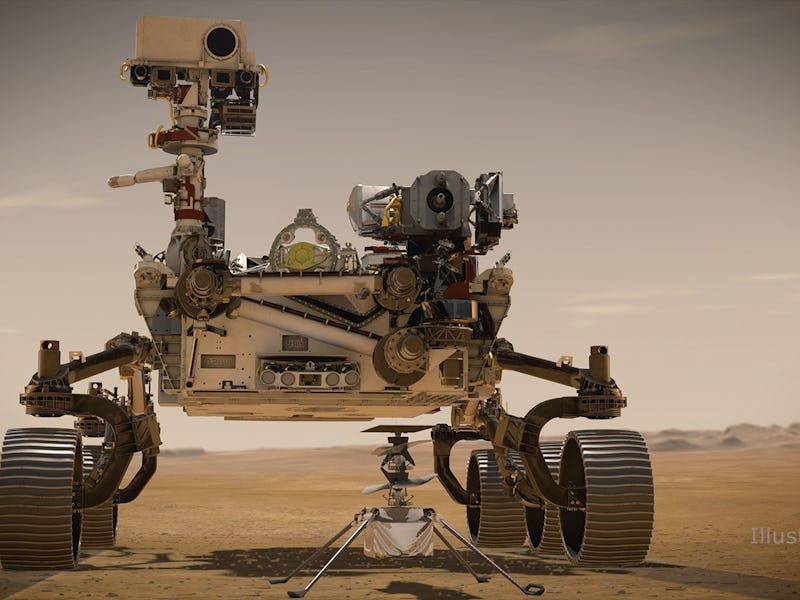Watch: Perseverance captures a sparkling sight from the Martian surface
Incredible footage showcases an other-worldly moon.

If you’re stuck excavating rocks on a planet for 687 Earth days, a little skywatching break is in order.
NASA’s Perseverance rover captured incredible footage of one of the two Martian moons shining in the planet’s skies. The 17-second time-lapse was posted on the rover’s Twitter account on Friday.
The foot reveals Deimos as a small, glistening speck above Mars. If you squint, you can see the moon on the right side of this image:
The Martian moon Deimos was captured by Perseverance.
Here it is a bit closer:
Hi, Deimos.
But it’s best viewed within the context of the time-lapse:
What you’re looking at — Perseverance was busying capturing images of Mars’ clouds when it caught something else: Deimos. This is the smaller of the two Martian moons and is shaped a bit like a potato.
In the time-lapse footage put together via a series of images captured by Perseverance’s cameras, Deimos can be seen twinkling in the Martian sky.
Deimos and the moon Phobos orbit Mars. Deimos is the smallest and outermost of the two. Both moons were first spotted in 1877 by Asaph Hall, an American astronomer.
Deimos is named after the Roman god of panic. The Martian satellite is one of the smallest moons in the entire Solar System, measuring at about only seven miles in diameter. It orbits around the Red Planet every 30 hours.
Deimos is heavily cratered but has a somewhat smooth appearance caused by the partial filling of some of its craters.
Deimos and Phobos appear to be made up of the same material that makes up asteroids found in the outer asteroid belt. In fact, when the pair were discovered in 1977, scientists believed them to be asteroids that had been captured by Mars' gravitational force.
How Mars came to have two moons is still a mystery, but it could have happened either by the two moons being captured by its gravitational force or through accretion of material around the planet.
The Perseverance mission — Perseverance landed on Mars on February 18, 2021.
When it’s not looking up at the moons, Perseverance looks for signs of habitability on the Martian surface and evidence of past microbial life. It is collecting samples of rocks and soil and setting them aside for a future mission to return them to Earth.
Perseverance is currently exploring Jezero Crater, which is believed to have once housed an alien lake with surface water. The hope is that rock samples from Jezero will reveal how habitable Mars was during its early history.
The mission will also test out conditions for possible human exploration of Mars by trialing a method of producing oxygen from the Martian atmosphere, characterizing environmental conditions such as water and dust on Mars, and looking for resources.
Perseverance rover is set to spend at least one Martian year on the planet — the equivalent of 687 days on Earth.